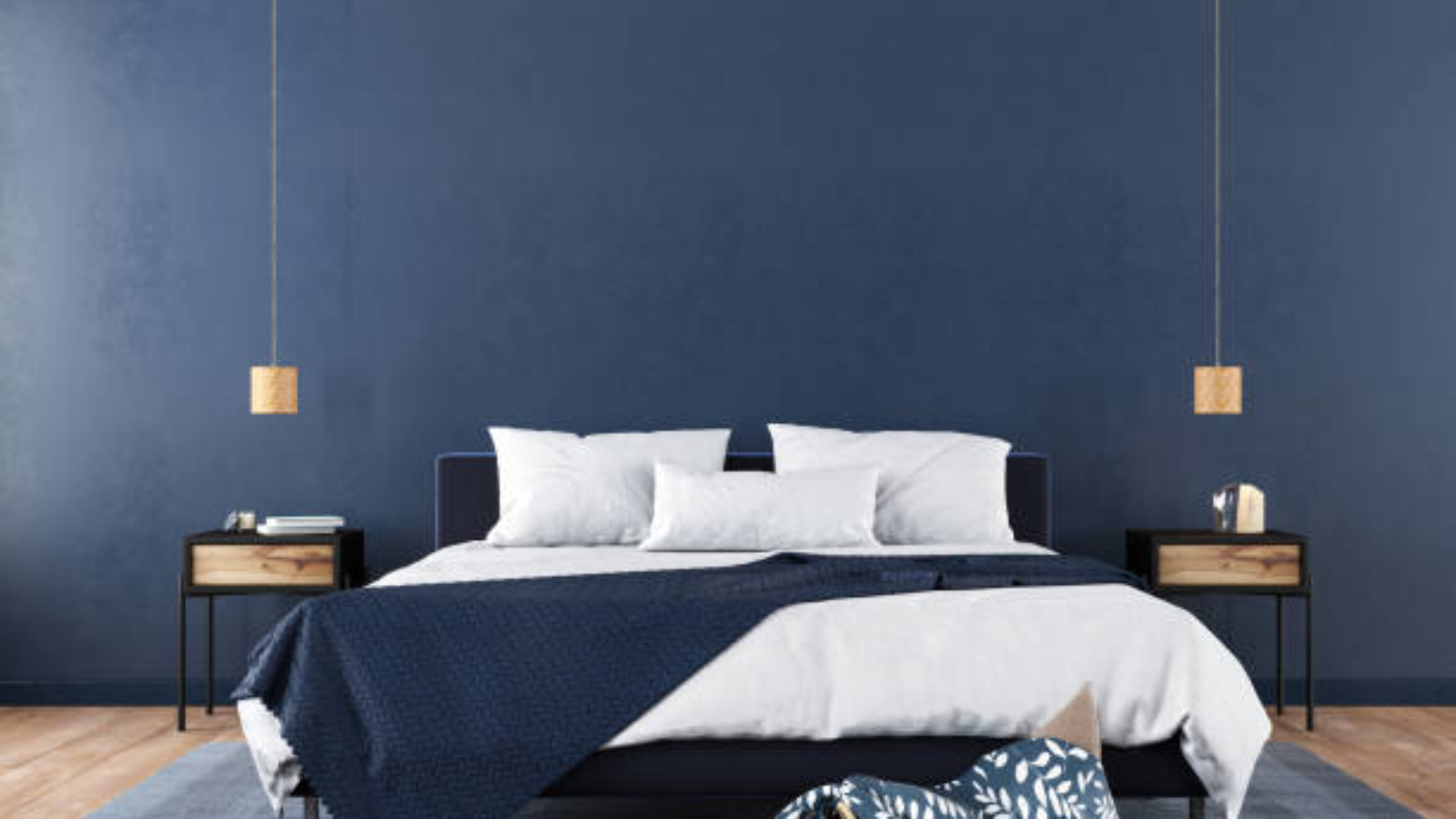Your bedroom is more than just a place to sleep – it’s your personal sanctuary where you unwind and recharge. Choosing the right paint for this space can significantly impact the room’s atmosphere and how comfortable you feel in it. With so many options available, it’s essential to pick the right type, color, and finish that aligns with your needs and preferences. Here’s a guide to help you choose the perfect paint for your bedroom.
1. Consider the Room’s Mood
Before you select a paint color, think about the kind of mood you want to create in your bedroom. Different colors evoke different emotions:
- Calm and Relaxing: Soft blues, greens, and greys can promote a peaceful, serene atmosphere, perfect for unwinding after a long day.
- Warm and Cozy: Neutral shades like beige, taupe, or warm browns create a welcoming and cozy environment.
- Vibrant and Energizing: If you want a more dynamic space, consider brighter colors like coral, mustard, or even a soft lavender. These shades add energy without overwhelming the room.
- Luxurious and Elegant: Deep jewel tones like emerald green, rich plum, or navy blue can give the room a sophisticated, luxurious feel.
2. Choose the Right Paint Type
Not all paints are created equal, and different rooms require different types of paint. For the bedroom, here are some paint options to consider:
- Emulsion Paint: This is the most popular choice for bedrooms because it is easy to apply, dries quickly, and is available in various finishes. It’s also low in VOCs (volatile organic compounds), making it a healthier option for indoor use.
- Eggshell: Eggshell paint is perfect for bedrooms because it has a subtle sheen and is more durable than matte finishes. It’s also slightly easier to clean.
- Matte: For a soft, velvety look, matte finishes are ideal for bedrooms. They hide imperfections well, but they’re not as easy to clean, so avoid them if your walls get a lot of wear and tear.
- Satin: This paint offers a smooth finish with a hint of sheen. It’s more durable and easier to clean than matte or eggshell, making it a great choice for bedrooms, especially for accent walls.
3. Lighting Matters
Lighting plays a significant role in how a paint color appears. Before settling on a shade, consider how much natural and artificial light your bedroom gets throughout the day:
- Natural Light: Rooms with plenty of natural light can handle darker colors like deep blues or greys, as the sunlight will balance out the richness of the shade. If your bedroom is dark or has limited natural light, opt for lighter shades to make the room feel more open and airy.
- Artificial Light: Pay attention to the type of lightbulbs in your room. Warm lighting can make colors look warmer, while cool lighting enhances cooler tones. Test paint samples under the lighting conditions you’ll experience in the room to ensure it looks the way you want.
4. Pick the Right Finish
The finish you choose for your bedroom paint will affect both its appearance and practicality. Here are the common finishes to consider:
- Matte/Flat: Best for creating a soft, calming look. It’s great for low-traffic bedrooms but can be harder to clean.
- Eggshell: Slightly more durable than matte, it provides a low-sheen finish that’s easy to clean and hides imperfections.
- Satin: A touch of shine makes satin a versatile option. It reflects light subtly, giving the room a more polished look while being easy to clean.
- Semi-Gloss: This finish is less common in bedrooms but can be a great choice for accent walls or trim. It’s highly durable and easy to clean but can be too shiny for all walls.
5. Test Before You Commit
Always test paint samples in your bedroom before making a final decision. Paint small patches on different walls to see how the color changes throughout the day under different lighting conditions. This will give you a better sense of how the shade will actually look in your space.
6. Don’t Forget the Ceiling
While choosing paint for your walls is important, don’t forget about the ceiling. A crisp white ceiling is a classic choice, but you can experiment with soft colors to add more warmth or height to the room. Lighter shades on the ceiling make the room feel larger, while darker shades can add intimacy and coziness.
7. Think About the Future
When choosing a bedroom color, it’s important to think long-term. While bold and trendy colors may appeal to you now, consider how you’ll feel about them in a few years. If you like to change décor often, go for a neutral base and incorporate color through bedding, artwork, or accessories. If you’re committed to a specific look, feel free to go bold with your paint choices.
Final Thoughts
Choosing the right paint for your bedroom is about more than just color—it’s about setting the tone for your personal space. Whether you prefer calm neutrals or bold, energizing hues, make sure to pick a paint type, finish, and shade that will make your bedroom a relaxing haven. By testing samples and considering the room’s lighting, you’ll be able to create a space that reflects your style and meets your practical needs.
Happy painting!


Leave A Comment